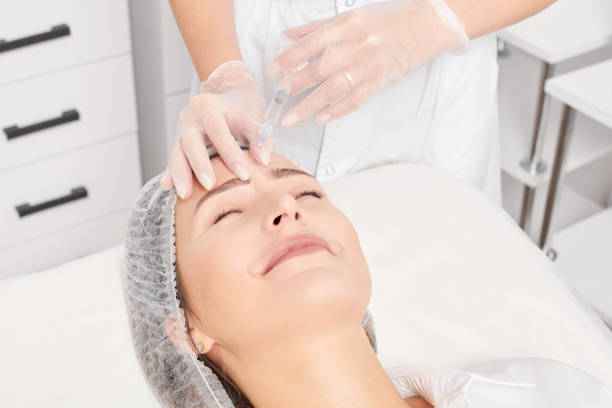Table of Contents
Dysport Vs Botox: Which is Better?
Dysport vs Botox, Which is Better?
Dysport and Botox are very comparable. Both originate from the neurotoxic protein botulinum toxin, which is safe when taken in moderation. Although Botox and Dysport can treat several medical issues, their most common application is to reduce wrinkles.
Both injectables are said to be non-invasive, and they both relieve tension in the muscles of the face. This prevents the muscles from contracting, which smoothes the wrinkles’ appearance. Their manufacturing processes for their trace proteins account for the variances between the two.
The areas in which Dysport and Botox are permitted to be used are one of their key distinctions. The frown lines between your eyebrows, known as glabellar lines, are the main problem that Dysport is designed to treat. For people who have moderate to severe frown lines, Dysport is a fantastic option.
Contrarily, Botox can be used to cure a wide range of wrinkles, including laugh lines, forehead wrinkles, and crow’s feet. A better option for you will be Botox if your wrinkles are minor to moderate.
Botox Explained
The bacterium Clostridium botulinum is used to make the neuromodulator Botox. Botulinum Type A, often known as “Botox,” can minimize or even eliminate wrinkles and fine lines when administered in controlled doses. The injectable prevents the brain from receiving nerve signals from the facial muscles. When misused, the toxin can be highly harmful and cause unintended botulism symptoms. But it is safe and valuable in the right hands.
When Botox stops the facial nerve signals, the muscles cannot contract as readily as they once could. Due to the lack of movement, wrinkles appear much less prominently on the skin.
Botox may start working within a week, but complete results may not appear for up to a month. Additionally, Botox injections have a duration of a few months, sometimes even up to eight months.
Dysport Explained
The glabella—the space between your eyebrows—is affected by less noticeable lines after receiving Dysport. These lines run from the forehead upward between the brows. When you squint or pout, glabella lines become very obvious. Also, Glabella lines may gradually start to show up more visibly as you’re unwinding.
Those with severe glabella lines should not use Dysport; those with milder lines should.
After a few days, Dysport may begin to work. However, the effects can linger for up to six months. To keep the results of your treatment going, you’ll need further injections.

Who can get Dysport or Botox?
Adults who are healthy and at least 18 years old with moderate to severe facial wrinkles are the target audience for Dysport and Botox injections.
You may not be a candidate for either procedure if:
- You are pregnant.
- You have botulinum toxin sensitivity.
- You have an allergy to Milk.
- You have a skin disorder.
- You have thick skin.
- You are on certain medications.
The ingredients in the injections may interact with a variety of medications. These include muscle relaxants and blood thinners. Additionally, certain drugs that alter your muscles may interact with the injections.
Side Effects of Dysport and Botox
Minor adverse effects are conceivable even though severe Dysport or Botox side effects are uncommon. These side effects typically go away on their own without causing any further problems.
Although modest side effects include swelling around the eyes, headaches, slight pain at the injection site, rash, and irritation are possible with Dysport, the procedure is generally regarded as safe.
Botox is considered safe and has few adverse effects, like Dysport. Following treatment, the most typical adverse effects are redness, swelling, bruising, mild discomfort, numbness, and headaches.
While exceedingly uncommon, botulinum toxicity is a significant side effect that both Dysport and Botox can bring. In addition, when the injection travels to another body area, botulinum toxicity occurs.
After a procedure, minor side effects typically go away within a week.
Q & A
Why do people choose Dysport over Botox?
Dysport is a great solution for those who experience moderate to severe creases between their eyebrows, also known as glabellar lines. Botox, however, can be used to treat various types of wrinkles, such as crow’s feet, forehead lines, and laugh lines.
Is Dysport just as good as Botox?
The effects of both Dysport and Botox last around 3-4 months, however Botox is three times as powerful as Dysport so a greater amount is required to achieve the same outcome. This does not necessarily mean Botox is a better option.
Who should avoid Dysport?
Avoid receiving Dysport if you are sensitive to the drug itself, cow’s milk protein, any other form of botulinum toxin (Myobloc®, Botox®, or Xeomin®), or have an active skin infection in the area to be treated.
What not to do when you get Dysport?
It is advised that after being given Dysport injections, people should stay away from hot tubs, hot showers, saunas, and tanning beds for at least a day. Additionally, it is suggested that individuals abstain from intense physical activity for the initial 24 hours after the procedure.
Conclusion
The formulations of the two injectables show the most difference. Compared to Botox, Dysport spreads quickly and is considerably more dilute. As a result, it is excellent for more significant surface regions, such as the forehead. On the other hand, since Botox is far more powerful, it works wonders on small areas and bothersome wrinkles like Crow’s feet. As a result, the main distinctions revolve around the dosage and duration of injections.
Laser Skin Clinic offers professional Allergan Botox injections and Dysport injections at our Toronto and Richmond Hill clinics. Check out our latest specials for Dysport and Botox.


